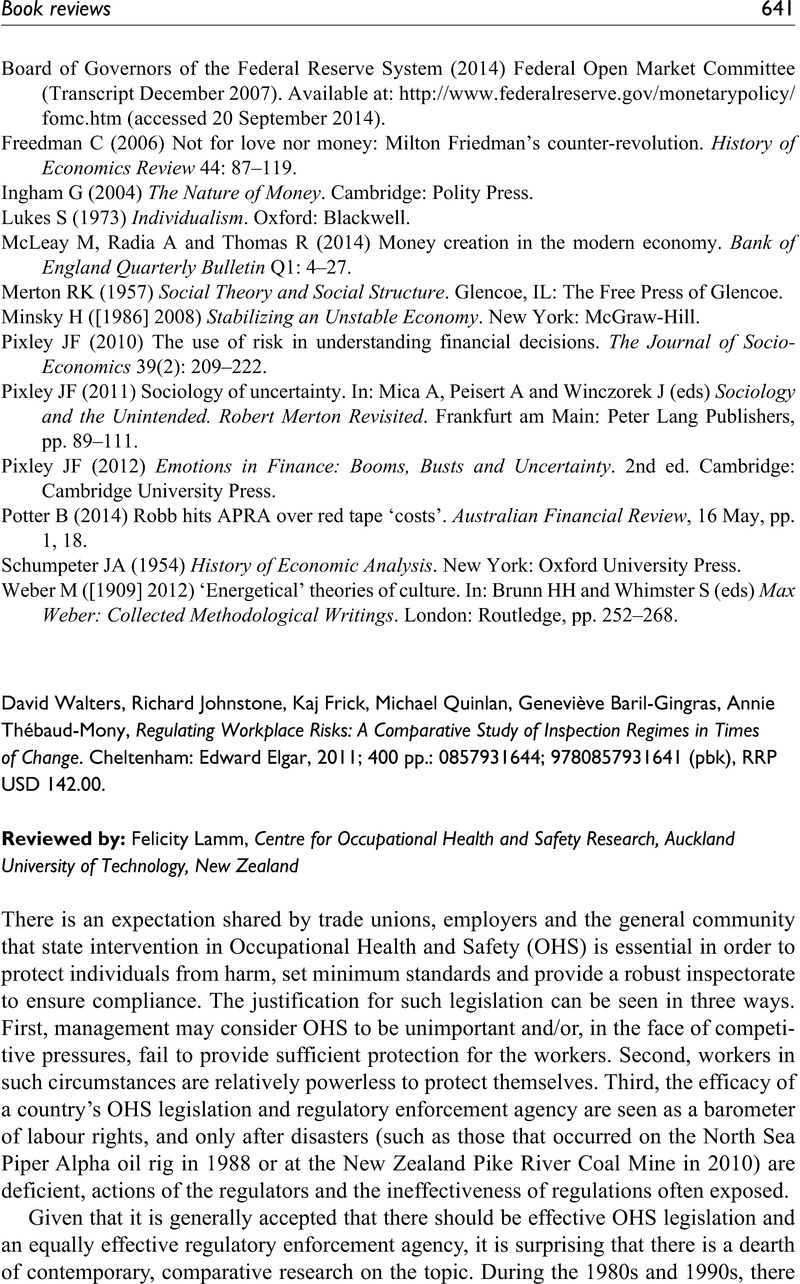Robson, L,
Clarke, J,
Cullen, K, et al,
et al
. (
2005)
The Effectiveness of Occupational Health and Safety Management Systems: A Systematic Review.
Toronto, ON, Canada:
Institute for Work & Health. Available at:
www.iwh.on.ca (
accessed 20 September 2014).
Google Scholar 